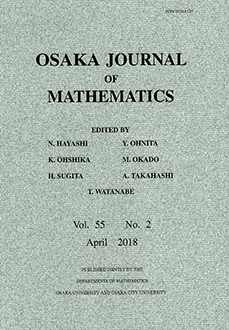Abstract
The Morse-Novikov number $\mathcal{MN}(L)$ of a smooth link $L$ in the three-dimensional sphere is by definition the minimal possible number of critical points of a regular circle-valued Morse function on the link complement (the term regular means that the Morse function must have nice behaviour in a tubular neighbourhood of $L$). Novikov homology provides lower bounds for $\mathcal{MN}(L)$. In the present paper we introduce the notion of twisted Novikov homology, which allows to obtain better lower bounds for $\mathcal{MN}(L)$ than the usual Novikov homology. Our twisted Novikov homology is a module over the Novikov ring $\mathbf{Z}((t))$ but it contains the information coming from the non abelian homological algebra of the group ring of the fundamental group of the link complement. Using this technique we prove that the Morse-Novikov number of the knot $n\mathfrak{C}$ (the connected sum of $n$ copies of the Conway knot) is not less than $2n/5$ for every positive integer $n$. We prove also that $\mathcal{MN}(n\mathfrak{C})$ is not greater than $2n$. The same estimates hold for the Morse-Novikov numbers of the connected sum of $n$ copies of the Kinoshita-Terasaka knot.
Citation
Hiroshi Goda. Andrei V. Pajitnov. "Twisted Novikov homology and circle-valued Morse theory for knots and links." Osaka J. Math. 42 (3) 557 - 572, September 2005.
Information





